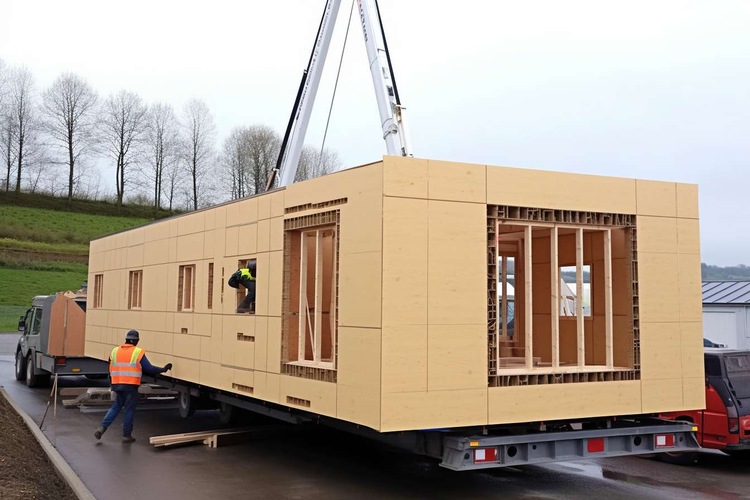Sheds Delivered and Installed: A Practical Guide to Choosing, Ordering, and Installing Your Shed
Garden sheds offer valuable storage solutions and workspace options for homeowners seeking to organize outdoor equipment, tools, and seasonal items. Modern shed delivery and installation services have simplified the process of adding these structures to residential properties, making it easier than ever to expand your outdoor storage capacity. Professional installation ensures proper foundation preparation, structural integrity, and compliance with local building requirements.

Types and Materials: Choosing the Right Shed for Your Needs
Selecting the appropriate shed material significantly impacts durability, maintenance requirements, and overall cost. Wood sheds provide natural aesthetics and customization options but require regular treatment against weather and pests. Metal sheds offer excellent durability and security with minimal maintenance, though they may lack insulation properties. Vinyl and composite materials combine low maintenance with weather resistance, making them increasingly popular among homeowners seeking long-term solutions.
Each material type serves different purposes and budgets. Wooden structures work well for workshops and hobby spaces, while metal options excel in harsh weather conditions. Composite materials provide middle-ground solutions for those wanting durability without extensive upkeep.
Sizing and Site Planning: Measuring Space and Preparing the Location
Proper site preparation forms the foundation of successful shed installation. Measure your available space carefully, considering setback requirements from property lines, utilities, and existing structures. Most residential areas require sheds to maintain specific distances from boundaries, typically ranging from three to ten feet depending on local regulations.
Ground preparation involves leveling the area, ensuring proper drainage, and creating a stable foundation. Concrete pads offer maximum stability for larger structures, while gravel bases provide adequate support for smaller sheds. Consider accessibility for both installation equipment and future use when selecting your location.
Delivery Options and Installation Services: What to Expect
Professional delivery services coordinate timing, access requirements, and site preparation needs before arrival. Installation teams typically complete setup within one to two days, depending on shed size and complexity. Full-service providers handle foundation preparation, assembly, and final positioning according to your specifications.
Delivery scheduling requires clear access for trucks and equipment, with adequate space for maneuvering materials. Some companies offer crane services for difficult-to-access locations or elevated installations. Installation warranties often cover workmanship for one year, providing peace of mind for structural integrity.
Costs, Warranties, and Permits: Budgeting and Legal Requirements
Shed costs vary significantly based on size, materials, and installation complexity. Understanding pricing structures helps budget effectively for your project.
| Shed Type | Size Range | Cost Estimation | Installation Cost |
|---|---|---|---|
| Basic Metal | 8x6 to 12x8 | $300 - $1,200 | $200 - $500 |
| Wood Storage | 10x8 to 16x12 | $800 - $3,500 | $400 - $800 |
| Vinyl/Composite | 8x6 to 12x10 | $600 - $2,800 | $300 - $600 |
| Custom Wood | 12x16 to 20x24 | $2,500 - $8,000 | $800 - $1,500 |
Prices, rates, or cost estimates mentioned in this article are based on the latest available information but may change over time. Independent research is advised before making financial decisions.
Permit requirements vary by location and shed size. Structures under 120 square feet often require no permits in many areas, while larger buildings may need building permits and inspections. Check with local authorities before ordering to ensure compliance with zoning regulations and building codes.
Care and Maintenance: Extending the Life of Your Shed
Regular maintenance preserves your investment and prevents costly repairs. Wood sheds benefit from annual staining or painting, particularly in areas exposed to direct sunlight and moisture. Metal structures require periodic inspection for rust spots and prompt treatment of any damage to prevent spread.
Roof maintenance involves clearing debris, checking for leaks, and ensuring proper drainage around the foundation. Ventilation systems help prevent moisture buildup and protect stored items from humidity damage. Simple preventive measures like door adjustments and hardware lubrication maintain smooth operation throughout the structure’s lifespan.
Proper maintenance schedules typically include seasonal inspections, annual treatments for wood surfaces, and immediate attention to any structural issues. Following manufacturer recommendations ensures warranty coverage remains valid while maximizing the shed’s useful life.




